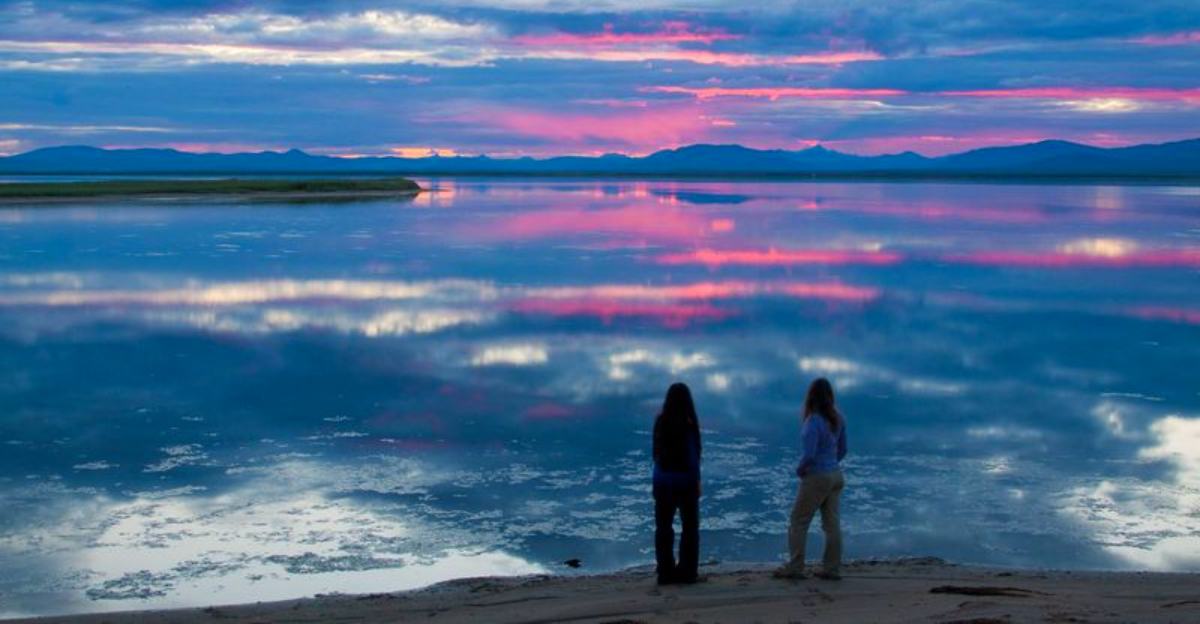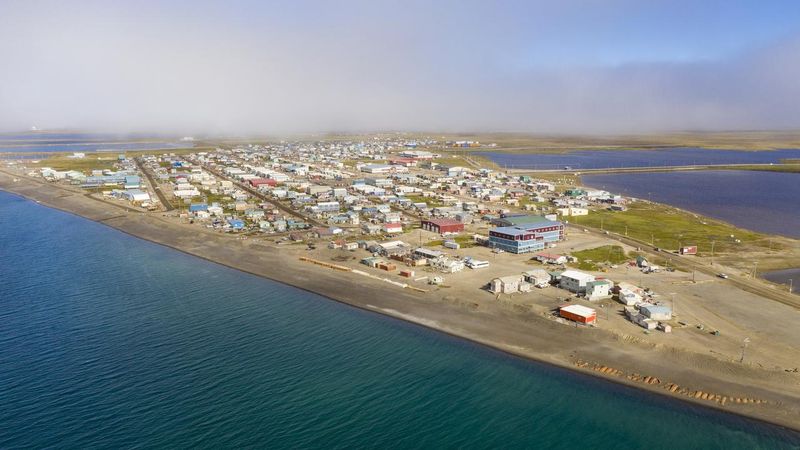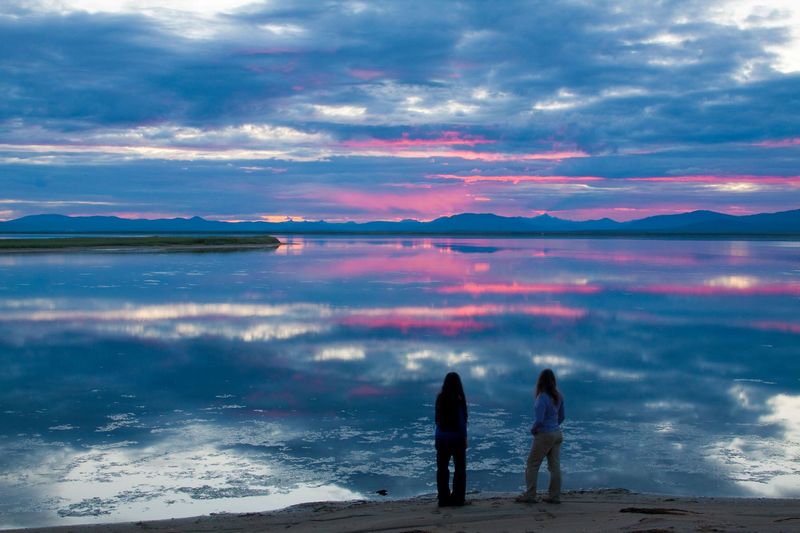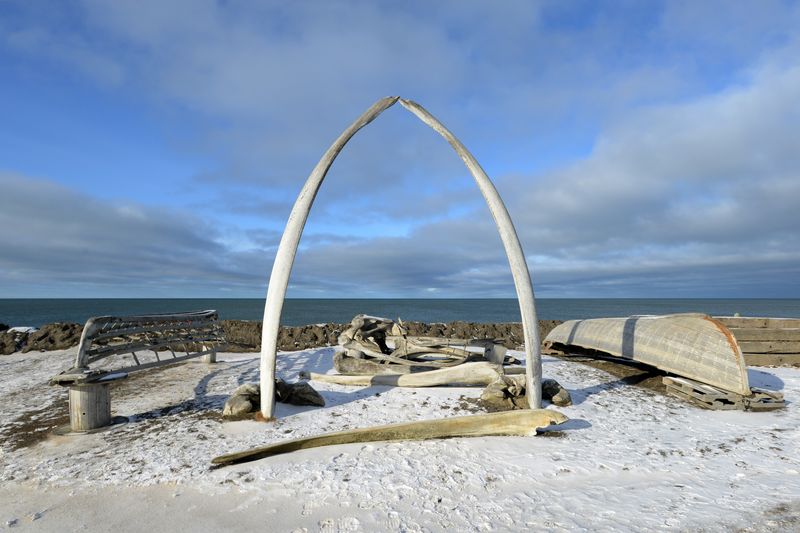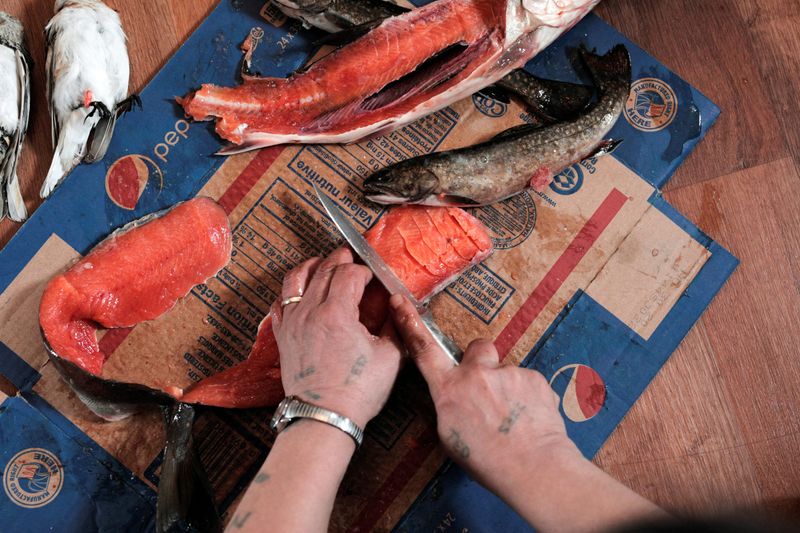Imagine a place where the sun disappears for more than two months, yet daily life not only continues, it flourishes. Utqiagvik, perched at the top of Alaska, defies expectations with resilience, ingenuity, and deep cultural roots. From polar night to midnight sun, this northernmost U.S. city shows how communities adapt to extremes. Read on to discover 12 surprising facts that reveal how darkness, ice, and tradition shape a truly extraordinary town.
1. Northernmost city in the U.S.
Utqiagvik is the northernmost city in the United States, perched on the Arctic coast where tundra meets sea ice. Its remote setting shapes every aspect of life, from transportation to architecture. Winds whip across flat terrain, pushing temperatures and visibility to extremes. Yet the community remains vibrant, anchored by schools, research facilities, and cultural centers. Residents share a strong sense of place and purpose. The city’s location also makes it a hub for Arctic science, wildlife observation, and climate monitoring. Visitors encounter stark beauty and powerful quiet. Standing at the edge of the continent, Utqiagvik symbolizes endurance and adaptation.
2. Polar night: 64 days of no direct sunrise
Each year around mid-November, the sun dips below the horizon in Utqiagvik and does not return until late January. This polar night lasts about 60 to 65 days, producing long, luminous darkness. Daily schedules pivot to artificial light, reflective gear, and planned routines. Many residents embrace cozy gatherings, indoor sports, and community events. Vitamin D strategies, sleep hygiene, and mental health support matter. Researchers and photographers revel in unique low-light conditions. Despite challenges, people work, study, and celebrate as usual. The period fosters solidarity, creativity, and calm. Life continues, guided by moonlight, stars, and the resilient rhythms of the Arctic.
3. Still civil twilight during polar night
Despite the sun’s absence, Utqiagvik does not plunge into total darkness. For a few hours on many winter days, civil twilight adds a bluish glow to the horizon. This ambient light illuminates snowpacks and sea ice with a quiet sheen. People take advantage of this window for errands and outdoor tasks. The twilight’s diffuse brightness helps balance safety and navigation. It also creates surreal photographic moments and peaceful walks. The sky’s colors shift from indigo to rose, marking time without sunrise. Residents learn to read the light’s subtleties. It is a daily reminder that darkness in the Arctic still holds gentle light.
4. Midnight sun in summer
From early May to late July or early August, Utqiagvik flips to continuous daylight. The midnight sun skims the horizon, casting long shadows at all hours. Residents switch to blackout curtains and flexible schedules. Children play late, and fieldwork stretches into the night. Fishermen, researchers, and photographers relish maximal daylight. The town buzzes with outdoor projects and community gatherings. Energy feels abundant, but sleep routines demand care. Wildlife viewing improves with constant visibility. The landscape glows with gold and silver tones. This luminous season complements winter’s darkness, forming a balanced annual rhythm that locals navigate with practiced ease.
5. Population and indigenous heritage
Utqiagvik’s 2020 census counted roughly 4,927 residents, many of whom are Iñupiat. Indigenous presence stretches back more than 1,500 years, shaping language, values, and seasonal rhythms. Community networks support elders, families, and youth. Cultural knowledge is shared through stories, schools, and everyday practice. Traditional crafts, from sewing to ivory carving, remain vital. The Iñupiat worldview emphasizes cooperation, respect for animals, and resource stewardship. Modern jobs intersect with subsistence activities. Local institutions preserve heritage and foster innovation. Celebrations, language revitalization, and education keep identity strong. Heritage is a living force guiding Utqiagvik’s past, present, and future.
6. Name change to reflect heritage
Until 2016, the town was widely known as Barrow. A local referendum restored the Iñupiaq name Utqiagvik, meaning a place for gathering wild roots. The change reaffirmed cultural identity and linguistic heritage. It signaled respect for ancestral ties and traditional knowledge. Residents embraced the update in schools, signage, and public records. Visitors learned correct pronunciation and context. The name carries ecological echoes, recalling foods and seasons. It underlines the inseparable link between land and people. Today, Utqiagvik stands as both place and story. The name itself teaches history, resilience, and belonging in the far north.
7. No road access to the rest of Alaska
Utqiagvik is not connected by road to the broader Alaska highway system. People and goods arrive mainly by air year-round, with summer barges handling bulky freight. This isolation shapes pricing, supply chains, and planning. Residents stock essentials and rely on community sharing. Aviation is a lifeline, from medical evacuations to mail. Weather can delay flights, demanding flexibility. Local services adapt with skilled mechanics and logistics teams. The airport becomes a vital social and economic hub. Despite challenges, the system works through experience and cooperation. The remoteness preserves Utqiagvik’s distinct pace and close-knit character.
8. Tundra terrain and deep permafrost
Utqiagvik rests on Arctic tundra, a treeless expanse overlying thick permafrost. In places the frozen ground extends deeper than 1,300 feet. Buildings stand on pilings to avoid heat transfer that could melt soil. Roads and utilities account for ground movement and ice lenses. Polygonal patterns etch the landscape where freeze-thaw cycles sculpt the surface. Engineers and researchers monitor subsidence and hydrology. Seasonal thaw creates wetlands that attract birds. Vegetation stays low but resilient, with mosses, sedges, and lichens. Permafrost is both foundation and challenge. It shapes architecture, ecology, and daily life across the community.
9. Very low precipitation – a polar desert
Utqiagvik experiences very low liquid-equivalent precipitation, qualifying it as a kind of polar desert. Cold air holds little moisture, so both rain and snow totals remain modest. Snow can still drift deep because wind sculpts it into piles. The dryness influences building materials, skin care, and hydration. Frost and diamond dust add sparkle to the air. Weather forecasts focus on wind chill and visibility more than heavy storms. The climate sharpens edges and sound. Even with little precipitation, ice persists due to low temperatures. The result is an austere, luminous environment that tests gear and rewards preparation.
10. Reliance on subsistence hunting and fishing
Subsistence practices remain central in Utqiagvik, blending tradition with modern tools. Families harvest whales, seals, walrus, fish, and waterfowl following strict cultural protocols. Sharing networks distribute food across the community. Knowledge of ice, weather, and animal behavior guides safe travel. The ocean sustains both diet and identity. Seasonal cycles coordinate hunts, celebrations, and education. Modern safety gear and communication devices increase reliability. Processing and storage are community efforts. Respect for animals is paramount, rooted in reciprocity. These practices foster food security, health, and cultural continuity amid Arctic change.
11. Rapid warming and climate-change frontline
Utqiagvik sits on the frontline of climate change. Rapid warming accelerates permafrost thaw, damaging roads and buildings while altering drainage. Coastal erosion threatens neighborhoods and cultural sites. Sea ice retreats, complicating travel routes and hunting seasons. Communities plan defenses, from relocation studies to shoreline protections. Researchers track temperature, ice, and wildlife shifts. Residents adapt gear, timing, and infrastructure strategies. The changes are visible and personal, not abstract. Despite challenges, local knowledge and science collaborate toward solutions. Utqiagvik’s experience offers lessons for a warming world.
12. Unique wildlife, events and culture
Utqiagvik hosts dynamic cultural events, from the blanket toss to spring whaling celebrations. The town’s museums and gathering spaces honor Iñupiat history and artistry. Wildlife sightings include Arctic foxes, snowy owls, and migrating whales offshore. Winter brings aurora borealis spectacles and rare polar phenomena. Filmmakers and journalists visit to capture the region’s stories. Community pride shines through dance, drumming, and food sharing. Festivals strengthen intergenerational bonds and identity. Visitors learn respectful etiquette and context. Even under long darkness, the calendar stays lively. Culture is the heartbeat that keeps Utqiagvik thriving.
